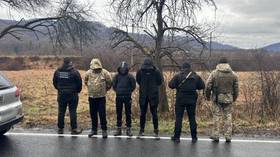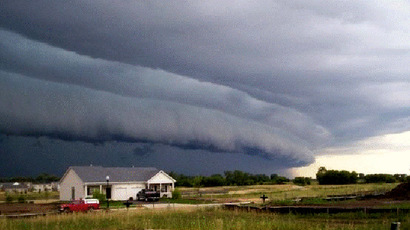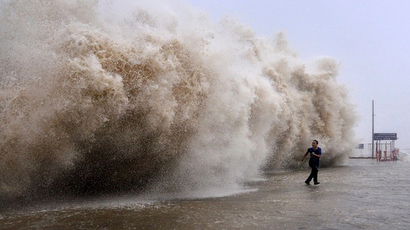Haiyan landfall in Vietnam as hundreds of thousands flee in fear of devastation
Typhoon Haiyan has made landfall in Vietnam after bashing through the Philippines leaving an estimated 10,000 people dead in the central province of Leyte alone, and devastating over 9.5 million residents.
The Vietnamese national weather forecast agency said the storm
descended in northern province of Quang Ninh at around 5 am local
time en route to southern China, where it is expected to become
weaker later on Monday. So far no casualties or major damage have
been reported from the storm with sustained winds of up to 140
km/h.
“We have evacuated more than 174,000 households, which is
equivalent to more than 600,000 people,” Vietnam’s flood and
storm control department said on Sunday.
The typhoon "is currently making landfall'' about 160km/h
east south-east of the capital Hanoi, the US Joint Typhoon
Warning Center (JTWC) said.
The Vietnamese government website said that five people died in
preparation for the typhoon, Herald Sun reports.
Vietnam is preparing its defenses after the storm annihilated the Philippines over the weekend,
leaving thousands dead and a trail of devastation through
Tacloban, the capital of Leyte province.
Haiyan destroyed 70 percent to 80 percent of the area as it
ripped through the province Friday, police chief superintendent
Elmer Soria told Reuters. Aid workers are only now beginning to
gain access to affected areas.
Mass evacuations were taking place in the central Da Nang and
Quang Ngai provinces of Vietnam. Numerous schools were closed
nationwide as people moved to higher ground, and some shelters
were “overloaded,” according to state-run VNExpress.
“People must bring enough food and necessities for three
days,” the report said. All boats have been grounded, with
tens of thousands of those directed to take shelter situated in
coastal areas. Residents of Hanoi were also preparing themselves
for heavy rain and floods.

The Red Cross stated that the change of direction meant that the
disaster area “could be enlarged from nine provinces to as
many as 15,” according to a statement released to AFP.
However, some 200,000 people evacuated from the southern central
provinces have been permitted to return to their homes as they
are no longer at risk, according to a governmental report
published on their website.

On Sunday afternoon, the typhoon had battered Vietnam's Con Co
Island, where its 250 inhabitants were relocated to underground
shelters containing food supplies for several days. The storm
brought with it three-meter high waves, according to Vietnamese
newspaper, Tuoi Tre.
Haiyan is one of the world’s most powerful-ever storms, based on
its recorded wind speed, which at landfall was 195 miles per
hour, with gusts as much as 235 miles per hour. It is thought to
have been even stronger than Hurricane Camille, which caused
devastation in the US in 1969.














